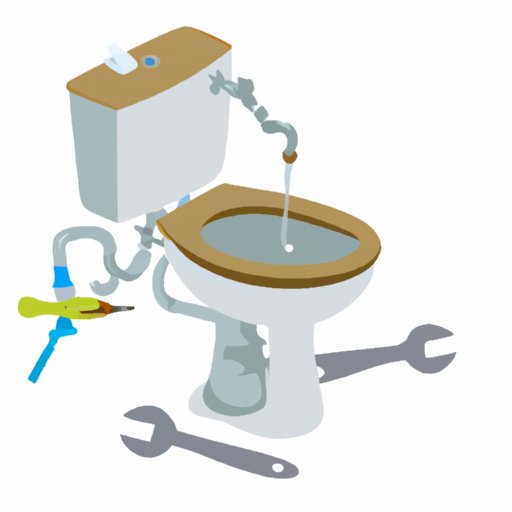
Introduction
A running toilet can be a frustrating and wasteful problem. Not only does it waste water, but it can also lead to higher water bills. It’s important to know how to fix a running toilet to save yourself money and prevent water waste. Don’t worry, fixing a running toilet is easier than you might think.
Identifying the Problem
The most common causes of a running toilet are the flapper valve, flush valve, and fill valve. Before attempting to fix the problem, it’s important to identify which valve is causing the issue. This can be done with a quick preliminary check.
Checking and Adjusting the Flapper Valve
The flapper valve is a rubber part that controls the water flow between the tank and the bowl. To check if this valve is causing your running toilet, first, flush the toilet and see if the flapper valve closes properly. If it doesn’t, it may need to be adjusted or replaced.
To adjust the flapper valve, loosen the chain that connects it to the flush lever and adjust the chain length as needed. If the flapper valve needs to be replaced, turn off the water supply and remove the old flapper valve. Install the new flapper valve and adjust the chain length as necessary.
Checking and Adjusting the Flush Valve
The flush valve controls the water released into the bowl when you flush. If this valve is causing your running toilet, it may need to be adjusted or replaced. To check if it’s the flush valve causing the problem, first, inspect the valve for any visible damage or wear. If it looks fine, try adjusting the height of the valve. If that doesn’t work, it may need to be replaced.
To replace the flush valve, turn off the water supply and empty the tank. Remove the old flush valve and install the new one. Adjust the height of the valve as necessary and make sure it’s securely installed. Once complete, turn the water supply back on and test the toilet.
Checking and Adjusting the Fill Valve
The fill valve regulates the water level in the tank after a flush. If this valve is malfunctioning, it can cause a continuous running toilet. To check if the fill valve is causing the problem, lift the float arm and see if the water stops running. If it doesn’t, the fill valve may need to be adjusted or replaced.
To adjust the fill valve, simply adjust the float arm or the screw on the top of the valve. If the fill valve needs to be replaced, turn off the water supply and empty the tank. Remove the old fill valve and install the new one. Adjust the float arm or screw as needed and ensure the valve is securely installed. Finally, turn the water supply back on and test the toilet.
Turning off the Water Supply
In some cases, turning off the water supply can help diagnose the problem. Before turning off the water, make sure to identify the problem as accurately as possible. To turn off the water supply, locate the shut-off valve near the tank and turn it clockwise until it’s fully closed. This will prevent water from flowing into the tank and allow you to work on the toilet without the risk of flooding.
Adjusting Chain Length
Sometimes, a running toilet may be caused by a chain that is too long or too short. Fixing this issue is relatively easy. If the chain is too long, adjust it by shortening the chain until it’s taut but not too tight. If the chain is too short, adjust it by lengthening the chain to provide enough slack for the flapper valve to close properly. Test the toilet to see if the problem is resolved.
Calling a Professional Plumber
If you’ve tried all of the previous steps and still can’t fix the running toilet, it may be time to call a professional plumber. A plumbing professional can diagnose the problem and recommend the best course of action. If you choose to call a plumber, be prepared to answer some questions to help them diagnose the issue quickly.
Conclusion
A running toilet can be a nuisance, but it doesn’t have to be a permanent problem. Identifying the source of the issue is the first step towards fixing it. Whether it’s the flapper valve, flush valve, fill valve, or chain length, the solutions can be easily tackled by following the steps outlined in this article. By fixing your running toilet, you can save water and money, all while preventing further plumbing issues in the future.
Remember, fixing a running toilet is a relatively simple DIY task but if you’re unsure, don’t hesitate to call a professional plumber.




